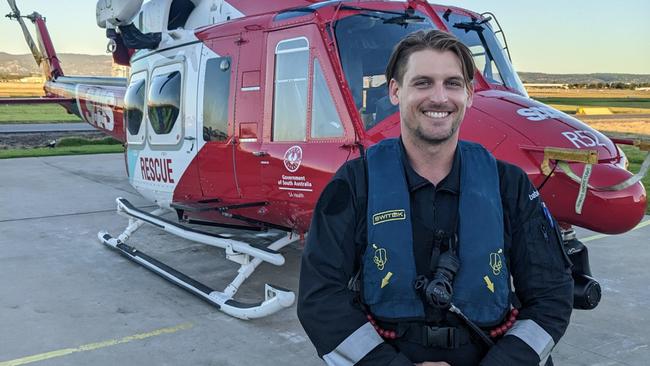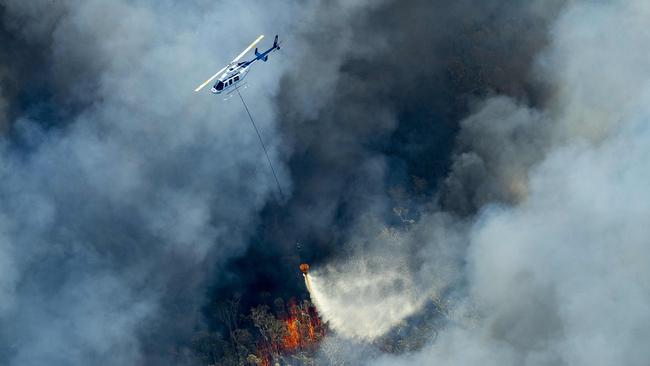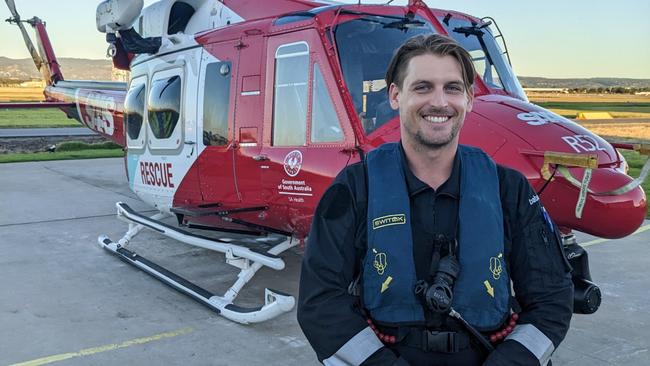Australians leaving their jobs to take up life-saving roles
More Aussies are motivated by a desire to help others in a more fulfilling, high stakes career.

Careers
Don't miss out on the headlines from Careers. Followed categories will be added to My News.
Australians are leaving their jobs to take up roles within the emergency services sector, motivated by a desire to help others in a more fulfilling, high stakes career.
This has resulted in a “huge shift’’ of workers moving to the sector, according to Craig McFarlane, South East Asia vice president of emergency services accreditation and education provider Pearson VUE.
The pandemic and other recent emergencies, including the 2020 bushfires and the two years of flood events, have highlighted the importance of frontline workers, including firefighters and 000 phone operators, prompting an increase in applications for ES roles, he says.
And more opportunities exist, McFarlane says. He admits working in emergency services “is not for everyone, (but) it’s fora lot more people than most probably realise”.

Realising a childhood dream
McFarlane says few people enter the emergency services sector straight from school or tertiary education but childhood ambitions to become a police officer or firefighter often win out in the end.
“I have worked with a number of people in corporate roles that have moved from that corporate role and gone across to the police force,’’ he says, noting his own ambition from a young age to enrol as a firefighter now sees him volunteer with the Country Fire Authority.
“When you hear some of the back stories (of workers transitioning to the Emergency Services) it just shows the ability to enter (the sector) from a number of roles. There’s definitely an appeal around not being chained to a desk. There’s an appeal about working with the public and helping people and protecting people. For some people, that continues through their schooling and, when they’re going through their careers, there’s still that appeal there. Anybody could and should apply (for ES roles)who has an interest.’’
McFarlane says minority groups are particularly encouraged to apply for roles as the sector seeks to embrace principles of diversity and inclusion.
Passion for adventure
Dominic Hodalin worked as a commercial diver and scuba diving instructor before transitioning to a rescue crew officer role with Australian Helicopters (now Babcock Mission Critical Services), where he was responsible for winching medical teams and patients to or from the ground and managing accident scenes.
Hodalin has advanced to become an air crew officer, where he is required to assist pilots with flight planning and communications and guide the helicopter over a moving vessel at sea, in proximity to obstacles or using night vision goggles.
“Coming from a background in the adventure industry – diving, climbing, surfing and skydiving – and as someone with a passion for adventure and the outdoors, getting involved in rescue helicopter work was always a dream of mine,’’ Hodalin says.
“You never know what the day’s work is going to bring. I enjoy serving my community and the feeling that I am doing something that matters.’’

Not your AVERAGE job
Matthew Dobson, chief aircrew officer at Babcock, Australia’s largest provider of rotary wing emergency services, says there is enormous career satisfaction gained within the ES sector.
“It’s something that not many people get to do – make a difference to someone’s life in their darkest hour,’’ Dobson says.
“In this job, you can say, ‘I was in the middle of the ocean, someone was on a sinking, burning ship, and I snatched them from the waves as they were slipping under’. It is unlike anything else you could do in a normal job.’’
He says the ability to make decisions under pressure, work in dynamic or harsh environments and keep a clear, strategic mind is essential for ES workers.
Depending on the role, candidates must also be fit and confident to work at heights and in the water.
“For some people (who are working in ES roles), they’ve had a family member who was a police officer or a firefighter so they’ve got an inbuilt sense of service to the community,’’ Dobson says. “For other people, they like the chance to change the course of history and the ability to make a difference in their job every day.’’
In the role
Depending on the role, emergency service workers may be required to:
● Attend the scene of fires and other emergencies
● Rescue and evacuate people trapped in dangerous situations
● Operate pumps and spray water, foam and chemicals from hoses, portable extinguishers and other appliances to extinguish fires or neutralise dangerous substances
● Cut openings in buildings and crashed vehicles to free occupants
● Maintain site security systems
● Administer first aid
● Attend and participate in training activities, rescue classes, drills, demonstrations and courses in emergency and firefighting techniques
● Train recruits in emergency procedures and practices
● Visit buildings and potential fire hazards to study access points and locations of hydrants
● Maintain tools and equipment
Source: Australian Government Labour Market Insights
Originally published as Australians leaving their jobs to take up life-saving roles

